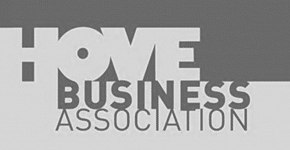
Are you stuck trying to choose the right domain name for your client? Well, you are not alone. It’s one of the most common challenges web-developers face. To be sure, a good domain name is a vital aspect of website existence. In this age when business is going digital at a rapid pace, a good domain name is important for branding. Customers often research companies on the web. Their first contact with a company is often through the company’s website. And as the saying goes, you don’t get a second chance at first impression. Hence, a good name impacts positively on branding.
This article will cover topics such as generic Top Level Domains (gTLD), internationalized domain names (IDN), country top level domains (ccTLDs), as well as recent domain extensions that are generating excitement and buzz in the industry. It also covers domain hacks and techniques that will help you find a workaround when your preferred domain name is not available.
By learning this, you will be more valuable as a web-designer or web-developer to your clients. You will have more options to offer to your clients and be able to uniquely brand corporate websites with more fitting domain extensions.
Table Of Contents:
Brief History of Domain Names
Prior to 1983, people needed to remember and type in a string of numbers to be able to locate a website or web page. In 1983 however, Domain Name System (DNS) was birthed to replace this difficult model. The DNS system was formulated from an older structure, and it now allowed users to input words instead of numbers when visiting or searching for a domain.
A good SEO freind Brendan from Umbrella domain registration experts told me “ The ease of use domain names offered made them fashionable”. “However, there became a need for owners of domain names to protect the right to their domain names. In 1998, ICAAN’s governing body proposed to coordinate and regulate all the unique domain names present on the Web”.
Domain Name Extensions Currently in Use
Generic top level domains (gTLD), countries top level domains (ccTLD) and personal domains are among the few groups of domains extensions available today. The .com domain is the best known and most used domain globally. It is used by corporations, small businesses and individuals. However, due to its popularity, finding a .com domain name that is available is a Herculean task. This challenge gave birth to new creative ideas of registering domain names. While the demand for .com is still there, it’s not as high as it used to be.
Domain extensions that have taken some of the demands of .com include .net, .org, .de, .it, .gov and .co.uk. There is a good mix of gTLD and ccTLD among the vast majority of websites currently available.
How to Register a Domain Name
There are two main ways of registering domain names. The first is via a web hosting provider, while the second is through a legitimate domain registrar. Domain registrars have the rights to sell and manage all gTLDs but not every ccTLDs. Each country chooses which domain registrar it grants the right to sell its domain exnsion. You can do a quick search online to find which domain registrar is authorised to sell the country domain name you are interested in.
Geneneric Top Level Domain Names
Generic Top Level Domain names are divided into three sub-groups: geographic, sponsored and unrestricted. Geographic gtlds are rare. Only .cat and .asia exist for now. But they are normally used in connection with an ethnic, cultural or geographical group. Sponsored gTLDs are specialized top level domains that have been underwritten for a specific organization, community or private agency. An example of this is .aero that serves the airline industry. Unrestricted gTLDs however, places no restriction on who can register as long as the domain name is available.
Certain conditions must be met before restricted domains can be registered. However, if you have a client in a specific industry such as hotels, it may be a good time to get him a restricted domain.
3) ccTLDs: Country Top Level Domains
One of the best times to get a ccTLDs is when your client’s services or products is restricted to a certain country. It’s important to know that gTLds will not rank as high as ccTLDs in a given country search. In countries like Sweden, the .se is more trusted than .com. Lists of various 240 ccTLDs can be found online.
4) ccTLDs Open for International Registrations
A lot of ccTLDs are now open for business to register internationally and more countries are looking to open their extension globally. Examples of such countries include Mexico, Cameroun and Netherlands.
5) Domain Hacking
This is a chance to get creative. No, this has nothing to do with actually hacking someone’s website. But it’s a smart way of using real words in which part of the word sits in the domain extension. A popular example is designM.ag. The website is registered in Antigua and Barbuda.
Domain hackers find extensions from the over 240 ccTLds and use them creatively.
3 Steps To Hack
1) Create a Name
The beauty of ccTLD is that it allows you to register two words domain names. A good example is ma.tt. Visit domain name registrars and try what you have in mind, you will be surprised at the various options it will bring up that you can tweak to suit your purpose.
2) Find an approved DNS provide for the country and register the site
3) Advertise and Brand
Since most people are used to .com and .net, you will need to make sure that it’s stressed in your international marketing and branding campaign.
Internationalized Domain name: Special Characters in Domains.
This type utilizes non ASCII characters such as ä, ö, å, é, è. It’s often a good idea to also register the corresponding ASCII characters of such words if available. A good example is västerås.se. If you type vasteras.se you will also be taking to the same website.







